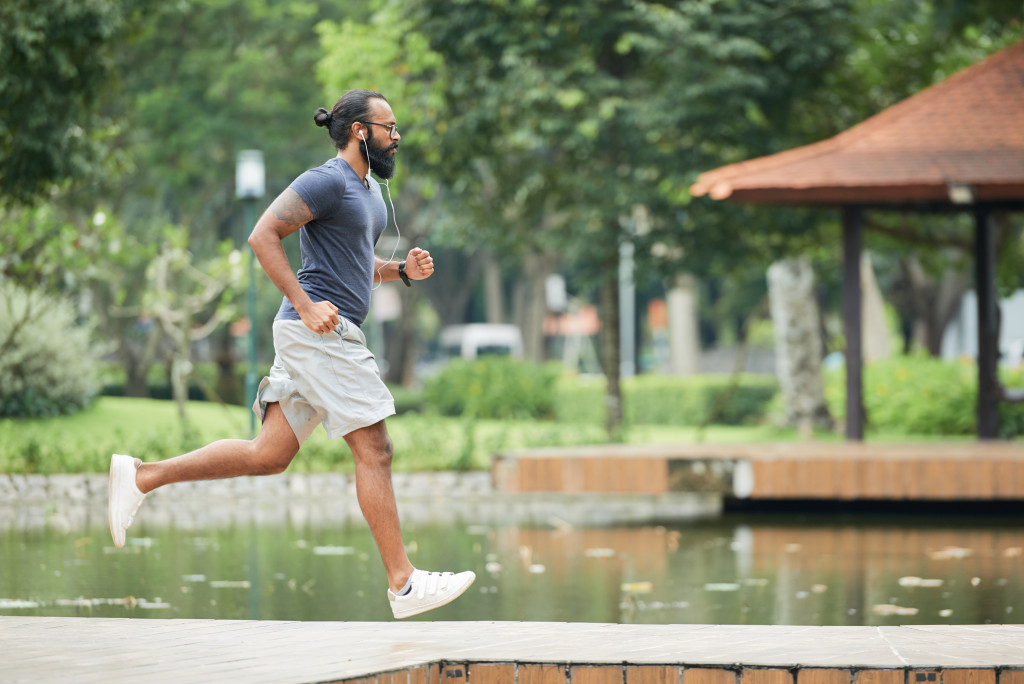People normally start developing an interest in fitness during their teens. Hence, if someone says you’re too young to work out, that couldn’t be further from the truth. In fact, most kids can start training with weights at 7 to 8 years old. So if you’re already 16, then you can consider yourself a late bloomer.
The belief that lifting weights can stunt a child’s growth is nothing but a myth. The truth is that the earlier you start working out, the healthier you’d grow. And not just in body, but in mind, too. Weightlifting helps kids develop higher self-esteem, positive body image, and mental discipline.
For teens, experiencing those benefits are crucial for their growth. You’re at the age where you’re most conscious of your looks. If you’re unhappy with your body, it’s going to affect your mental health, too. Hence, working out, particularly increasing your muscle bulk, can boost your self-confidence and prevent mental health issues.
As you start your fitness journey, take note of these tools and equipment you’re going to need:
1. Proper Workout Clothes
Your clothes won’t do anything to change your body, but they will affect the way you move. They also make a difference in how you feel after exercising. Certain gears, which should be part of your fitness outfit, can protect against injury.
When you shop for workout clothes, you’d notice that most of them are made of a distinct, synthetic fabric. This fabric contains polypropylene, a moisture-wicking material that allows you to stay cool after an intense routine. They draw the sweat away from your skin but don’t soak it as cotton does.
Cotton fabric is only good for bottoms, like shorts or sweats. But to maximize your comfort, choose synthetic fabric for your whole ensemble, minus your socks. Avoid unbreathable fabrics altogether, such as plastic-based and rubber-based ones. They keep sweat from evaporating, leaving you hot and sticky during and after exercising.
As for the fit, loose is ideal for most exercises. But if you’d practice yoga, stretchy, fitted fabrics are more proper. Basically, as long as your clothing doesn’t get in the way of your movements, it’s the right fit.
If you’d do heavy lifting exercises, like deadlifts, you need power gear. Knee sleeves for deadlifts are among the best. They add support to your knees, which can get strained as you lift heavy weights. They’re also essential for recovering the muscles afterward.
2. Proper Running Shoes
To move with ease and speed, you need to wear the right running shoes. Consider your foot type as you choose a pair. If you’re flat-footed, which means your feet don’t have a prominent arch, you need strong heel support and sturdy foam for the middle of your feet. If you have high arches, a flexible running shoe with ample cushioning for the middle of your feet suits you best. The most standard running shoes, which offer basic support for the heels and arches, will work for you if you’re neutral-footed.
If you’re unsure how to choose the right pair, bring the shoes you often wear as you shop. They’ll help you find the fit and support that make you the most comfortable.

3. Workout Equipment
Equipment isn’t required for beginners, but it can help increase your motivation. For your aerobic routines, consider a jumping rope. Types with weighted ropes are available, so try those to add a challenge to your skips.
For your dumbbells, the ideal weight is something you can lift comfortably for eight to 15 repetitions. Gradually increase the weight as your muscles get stronger. However, don’t start lifting until you’ve mastered the proper techniques. Start with bodyweight exercises first to boost the strength of your core, back, and shoulders.
To add a challenge to your bodyweight exercises, consider resistance bands, a medicine ball, gliding discs, and ab rollers.
4. Recovery Tools
After each session, your muscles will be sore. They’ll need some TLC to recover and be ready for another session tomorrow.
To massage your sore muscles, consider a massage gun. It’s a popular tool that athletes and fitness experts use. Foam rollers are another great tool, especially for sore legs.
5. A Healthy, Well-balanced Diet
Teens shouldn’t have a restrictive diet, even when they’re trying to build their muscles. You’re still growing, so you should give your body a generous amount of nutrition. Just limit your consumption of processed and junk food. Focus on vitamins, fiber, and most importantly, protein. It’s the nutrient that would help build up your bulk. And of course, don’t forget to drink at least eight glasses of water. Energy drinks may help hydrate you, but water still tops when it comes to nutrition.
Remember to be kind to yourself when working out. You won’t build muscles overnight, so be patient. Furthermore, your body is beautiful, even if it doesn’t fit ideals.